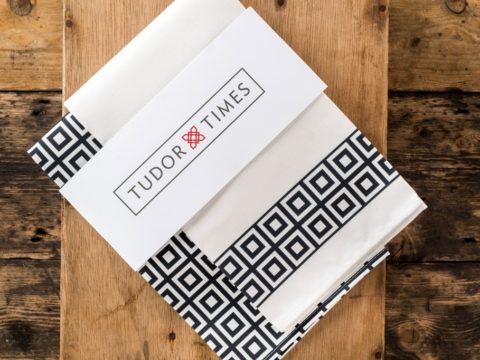Anne of Cleves: Life Story
Chapter 10 : Queen Mary
In July 1553, King Edward died, aged just fifteen. The attempt to squeeze Mary out of the succession, in favour of her Protestant cousin, Lady Jane Grey, failed, probably to the relief of Anne, who, despite the contretemps over Westhorpe, had maintained her friendship with Mary.
As Edward VI had been unmarried, there had not been the same level of court social life for ladies as had pertained in the days of Henry VIII. With Mary’s accession, that changed, and Anne was immediately involved in ceremony. On 30th September, she rode in a silver-draped carriage directly behind Mary to the coronation procession. Her fellow-carriage-occupant was her other stepdaughter, Elizabeth. Both were robed in crimson velvet.
The next day, Anne dined at Mary’s table, following the coronation itself, again alongside Elizabeth. Even Mary’s cousin, Lady Lennox, of whom the queen was particularly fond, was not accorded this honour.
During Edward’s reign, a Protestant form of religion had become mandatory. Mary had always refused to conform, but there is no evidence that Anne had done anything other than obey the law. Now, Mary returned the country to Catholicism, and again, Anne conformed – there is no information about her own religious views – probably, like most people, she had a preference one way or the other, but no inclination to be a martyr. Her mother had been a conservative Catholic, but Sibylle, was considered a leading light in the Lutheran world.
Soon after Mary’s accession, Anne put in motion a request to the government to have her marriage to Henry VIII recognised as valid – if it were, the terms of the original marriage treaty would be liable to be fulfilled, which would enable her to return home, which she longed to do, with the status and wealth of a dowager queen. The annulment settlement specifically precluded her going home.
How the council would have answered the petition in the long term is an intriguing mystery. Before long the whole government was concerned with the question of the queen’s own marriage, and had no time for Anne’s affairs. Anne felt that her relationship with Mary was good enough for her to join the chorus of voices advising the queen about her marriage. Her preferred candidate, on her brother’s recommendation, was the Archduke Ferdinand of Austria, brother of Wilhelm’s wife, and the son of Mary’s cousin, the King of the Romans.
Mary, however, had other ideas, and selected another cousin, Philip of Spain, son of the Emperor Charles. This led to Wyatt’s Rebellion, the stated purpose of which was to prevent a marriage between Mary and Philip, but which may have had another purpose – replacing Mary with Elizabeth, who would be married to Edward Courtenay, an off-shoot of the royal family. The French king, Henri II, had an implacable hatred of all things Spanish, and had eagerly supported the attempt in 1553 to prevent Mary reaching the throne. He was certainly giving moral, if not financial or military, support to Wyatt.
Mary, it seems, believed that Anne was also working against her. The queen told the Imperial Ambassador, Renard, that Wilhelm had asked Henri II to support the rebellion, perhaps because Anne had asked Wilhelm to use his influence. It is unlikely that Anne would have plotted for the overthrow of Mary, in favour of Elizabeth for any personal reason. There is nothing to suggest the two women had quarrelled. The idea mooted by Renard that Anne wanted revenge for her repudiation by Henry VIII seems far-fetched – neither Mary nor Elizabeth was in any way responsible. A more likely motive would be a general Clevian desire to undermine the emperor, which Anne’s loyalty to her brother might have led her to support.
The other possibility might be that Anne’s religion had moved towards Protestantism, as had Elizabeth. Anne’s tenant at Bletchingly, Thomas Cawarden, was arrested. The house was found to contain seventeen cartloads of weapons – a cache that would be hard to explain to a suspicious government. There is no evidence that Anne was ever questioned in connection with the rebellion. On 3rd April, following Wyatt’s defeat, Wilhelm sent a polite message of congratulation to Mary.
The spring of 1554 was a difficult time for Anne – she received news of the deaths of Sibylle and Johann Friedrich and she had lost the queen’s friendship. Dissatisfaction over Anne’s possible implication in the rebellion may have discouraged the queen from re-opening the question of the validity of Anne and Henry’s marriage. If Anne were going to cause trouble, she was better in England, under Mary’s eye, than in Cleves with a handsome dower.
Lingering suspicion of her step-mother may also be the reason for Mary not inviting Anne to her wedding to Philip, which took place at Winchester in July 1554. Anne wrote her congratulations, and asked permission to visit the queen, and the new king, but there is no evidence that Mary invited her to attend court again.
Anne of Cleves
Family Tree
